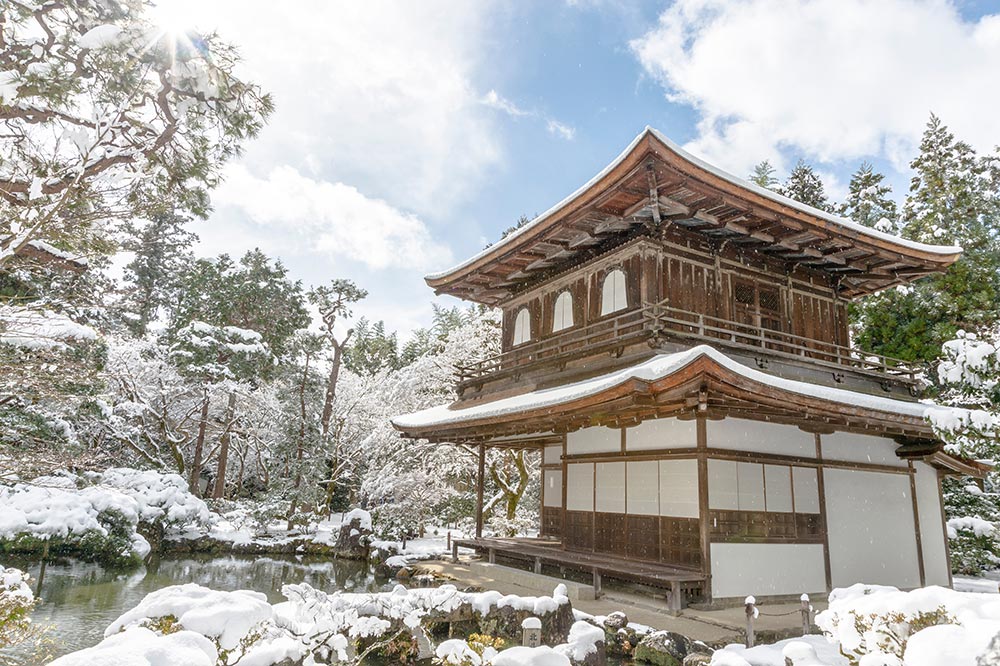

4 FORMER CAPITAL CITIES OF JAPAN. EXPLORE THE HISTORICAL SEATS OF EMPERORS
Historical capitals and the former name of Japan
If you take a look at the history of Japan, the former Yamato, you can easily get lost in the complicated list of its legendary and official capitals. The capital was considered to be a current, permanent seat of the emperor, and Japanese emperors liked to move from place to place. Still, they usually moved within certain regions so 4 periods of former capitals can be identified in the history of Japan.
Heijō-kyō – Japanese capital in the Nara period
Even though the first permanent seat of the Japanese rulers – Fujiwara-kyō (藤原京) in Yamato – was erected a few decades earlier, it is Heijō-kyō (平城京) that is considered a the first historical capital city of Japan. The “peace capital,” because this is what the Japanese name literally means, officially served as the seat of the authorities between 710 and 740 AD and between 745 and 784 AD. Nara was modelled after the Chinese metropolis Chang’an, which was for the people of contemporary Japan what New York is for us today. The city was designed based on a regular network of streets intersecting at a right angle. However, rectangular shape of the Chinese original was abandoned so that an additional, external district of the city could be built. The Chinese influence on the shape of the first Japanese capital was not limited to spatial architecture only. City planning trends reached Japan together with the values and notions characteristic of the Middle Kingdom. Chinese Buddhist monks started to come to Nara to settle down in the area. The emerging increasingly spectacular monastery complexes alarmed Japanese authorities, who decided to move the seat of the empire in 784 AD in fear of the political agendas of the monks. By losing its status of the capital city, Nara was able to avoids military attacks, and thus keep all of its feats of architecture, including the Todaiji Temple with the famous Great Buddha Hall. The atmosphere in the city is special to this day, guarded by the sika deer living in the area – the antlered emissaries of Takemikazuchi, the god of thunders and swords. It is a place for those who seek the ancient spirit of Japan.
Kuni-kyō – seat of Japanese emperors for four yeas
The next capital city served official administrative functions only for 4 years (between 740 and 744 AD), and its construction was never completely finished. Emperor Shōmu left Nara in 740 AD due to the Fujiwara no Hirotsugu rebellion. After the rebellion fell, he decided to return to the former capital, but encouraged by Tachibana no Moroe (an aristocrat and the then Minister of the Right) he decided to settle down in Kuni- kyō (恭仁京). Before the imperial court returned to Nara, it stayed in Naniwa and Shigaraki for some time. Finally, in 745 AD, the public forced the emperor to re-declare Heijō-kyō the official capital city of Japan. Even though the construction of Kuni-kyō was irrevocably interrupted, the archaeological works carried out thus far revealed that the city planning was based on Chinese metropolises.
Nagaoka-kyō
The growing influence of the Buddhist monasteries emerging around Nara is only one of the possible reasons behind the emperor’s decision to move the Japanese capital. Another contributing factor could have been the fact that an ancient line of the imperial family, seen as competition by the then emperor Kammu, was staying in the area of Heijō-kyō (平城京). The new location was expected to be better connected with the other parts of the country, due to the proximity of the navigable Yodo River, flowing into the Naniwa port.
The construction of Nagaoka-kyō (長岡京) commenced immediately after the decision to leave Nara, and just a year and a half later Kammu decided that the city was ready to serve the new function. However, just as in the case of Kuni-kyō (恭仁京), the construction was never completely finished and just 10 years after moving the emperor decided to change the capital yet again. This was caused most likely be the fear that the ghost of prince Sawara, Kammu’s brother, exiled for his involvement in the death of the constructor Nagaoka-kyō, might come to take revenge. The choice could have been also connected with the unique location of the city, which limited its development and involved a risk of floods. Nagaoka-kyō officially lost the status of the Japanese capital in 794 AD.
Kyoto – the last historical capital of Japan
Heian-kyō (平安京), or literally the “Tranquillity and Peace Capital,” indeed proved to be a tranquil refuge for Japanese authorities, where they found a permanent seat after the years of changes for the next 1000 years. In time, the city changed its name, becoming simply the Capital – Kyoto (京都市). Just like the other Japanese capitals, the city was designed after the Chinese Chang’an. Due to quick development, the 12th century population of the metropolis was already half a million. Over the centuries, Kyoto had its ups and downs, it thrived and it suffered destruction as a result of warfare. The particularly outstanding sites reminding the visitors about the former splendour of the most famous Japanese capital are: Kinkaku-ji (金閣寺) and Ginkaku-ji (銀閣寺), or the Golden and Silver Pavilions, the imperial court and the legendary entertainment districts – Gion and Ponto-chō. This is where one could once find beautiful Japanese geisha, today only to be seen in the most select establishments, closed to the majority of ordinary mortals. Kyoto functioned as the Japanese capital throughout the whole shogunate period until the emperor returned to the throne in 1868, when Tokyo became the new capital city.
Each of the historical capitals of Japan has its own complicated history of imperial families and political relations. Each of them is a unique place on the map of the Country of Cherry Blossoms, worth including on the itinerary of your trip to Japan.














